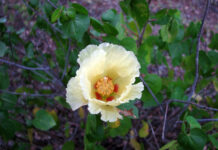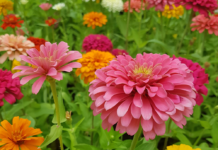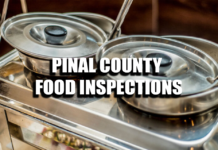
I love plants. They helped save my life in their own special and unique way. They have also introduced me to some of the best friends I have ever had.
Throughout that process I learned tons of information about plants that both amazed me and set me free. Then the world went a bit crazy, and now, while everyone is discussing food scarcity, I find myself even more drawn to learning about what plants can do to provide everyone with food security.
Here we get to purslane (Portulaca oleracea), one of many wild plants commonly known here as “weeds.” Less commonly known is its standing as a food source in many places throughout the world. Purslane is packed with nutrition and is one of the few vegetables super-rich in omega-3 fatty acids. In fact, it has the highest recorded levels of omega-3s found in any land-based plant.
A 3.5-oz portion contains the following recommended daily requirements: Vitamin A, from beta-carotene, 26%; Vitamin C, 35%; magnesium, 17%; manganese, 15%; potassium, 14%; iron, 11%; and calcium, 7%. It also contains small amounts of vitamins B1, B2 and B3, folate, copper and phosphorus. The best part is you get all of this for the low, low cost of only 16 calories, making purslane one of the most nutrient-dense foods on the planet if calculating calorie-for-calorie.
Now, it’s not all butterflies and rainbows, though butterflies love purslane. It should be known if you are prone to kidney stones you should use purslane with moderation and leave the seeds out of your culinary exploration. It contains oxalates and the seeds tend to have higher levels of them. It also tends to be saltier than other vegetables due to its succulent nature.
There are different varieties of purslane locally, including horse purslane (Trianthema portulacastrum), which is also edible but may irritate the throat. Some confuse purslane with spurge visually; this is important to mention because spurge is toxic. Be sure to properly identify any plant you are looking to munch on as most plants have look-alikes which should typically be avoided.
Purslane has a tart flavor with citrus undertones. Some say it tastes similar to spinach and watercress. It can be eaten raw, cooked like spinach, steamed, sautéed, juiced, boiled, pickled, drenched in butter, or added into a salad with some oil and vinegar. There’s even a recipe for chimichurri online.
References: ncbi.nlm.nih.gov, healthline.com, webmd.com
Cristina Proctor is a Master Gardener volunteer with the University of Arizona.
This column was first published in the May edition of InMaricopa magazine.












![Alleged car thief released without charges Phoenix police stop a stolen vehicle on April 20, 2024. [Facebook]](https://www.inmaricopa.com/wp-content/uploads/2024/04/IMG_5040-218x150.jpg)

![MHS G.O.A.T. a ‘rookie sleeper’ in NFL draft Arizona Wildcats wide receiver Jacob Cowing speaks to the press after a practice Aug. 11, 2023. [Bryan Mordt]](https://www.inmaricopa.com/wp-content/uploads/2024/04/cowing-overlay-3-100x70.png)


